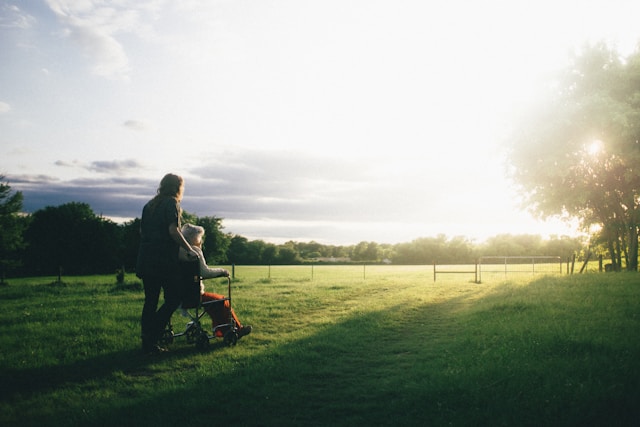Key Takeaways
- Physical and social activities are crucial for maintaining well-being in retirement.
- Diverse amenities in retirement communities support a healthier, happier lifestyle.
- Data-backed benefits include improved mental health and increased social engagement.
- Active living cultivates stronger community bonds and a sense of belonging.
Introduction to Active Living in Retirement Communities
Active living isn’t just a buzzword; it’s a cornerstone of a fulfilling life, particularly in retirement communities. In a setting that supports older adults, emphasizing physical, social, and mental activities can significantly boost life quality. To explore how active living can be integrated into a vibrant community, click here for detailed insights. Providing an environment where residents can thrive through various activities underscores the importance of active living. Whether participating in group fitness classes, engaging in artistic pursuits, or simply enjoying a walk around the community, these activities contribute to a holistic approach to well-being. This article delves into how active living can transform retirement communities into vibrant, engaging environments that offer residents a fulfilling and dynamic quality of life.
The Crucial Role of Physical Activities
Physical activities are not just about staying fit; they are fundamental to preserving mobility and independence. Engaging in regular exercise routines can significantly reduce the risk of chronic diseases. Moreover, physical activities like yoga, swimming, and walking have been shown to improve cognitive function and elevate mood by releasing endorphins, which are natural mood lifters. For instance, incorporating activities like yoga, swimming, and walking trails into daily life can lead to a more dynamic and healthy living situation, allowing residents to live life to the fullest.
Group Activities Foster Social Connections
Participating in group fitness classes, sports, or hobby clubs strengthens the body and fortifies social bonds. Engaging with peers in a shared activity fosters community and belonging, which is essential for mental health. Social interaction is linked to lower levels of stress and a higher quality of life among older adults. Whether joining a dance class, participating in a tennis match, or being part of a knitting group, these interactions provide emotional support and a sense of camaraderie that enriches daily living.
Diverse Amenities at Your Fingertips
Modern retirement communities offer many amenities that cater to their residents’ varied interests and needs. These facilities offer various options for staying active and entertained, such as fitness centres, swimming pools, art studios, and libraries. Such variety ensures that every resident can find something that aligns with their interests and capabilities, promoting physical fitness and mental and emotional well-being. Whether it’s an afternoon painting session in an art studio or a morning swim in a heated pool, the availability of diverse amenities ensures that residents have plenty of opportunities to lead a balanced and fulfilling life.
Technology: A New Avenue for Engagement
Technology has become an indispensable tool for promoting active living. Many retirement communities now offer tech-based activities such as virtual fitness classes, online hobby groups, and gaming sessions. These tech-savvy solutions keep residents physically active, mentally stimulated, and socially connected. For instance, participating in a virtual yoga class can provide physical exercise and unity with fellow participants, even if they are miles apart.
Mental Stimulation Is Key
While physical activity grabs much of the spotlight, mental engagement is equally crucial. Activities like book clubs, trivia nights, and educational lectures can provide significant cognitive benefits. They keep the mind sharp and foster an environment of continual learning and curiosity. Whether solving a crossword puzzle, discussing a new novel in a book club, or attending an educational seminar, these activities ensure the mind remains agile and active.
Importance of Lifelong Learning
Lifelong learning programs not only offer intellectual stimulation but also present opportunities for social engagement and personal growth. By attending classes, workshops, or even online courses, residents can dive into topics they are passionate about, keeping their minds agile and engaged. Reading groups, language classes, and history lectures can turn retirement into a period of discovery and enrichment. These programs offer a chance to explore new hobbies, acquire new skills, and open doors to new friendships, creating a vibrant intellectual atmosphere within the community.
Building a Stronger Community
Active living helps cultivate a sense of community within retirement residences. Shared activities provide common ground for forming friendships and mutual support. These social networks are invaluable, offering emotional support and a sense of belonging that significantly enhances life quality. Participating in community events, group activities, and social gatherings fosters a supportive environment where residents can share experiences, celebrate achievements, and offer emotional support to one another. This sense of community is essential for overall well-being and happiness in retirement.
Wrap-Up
In summary, active living is a multifaceted approach that significantly boosts the quality of life in retirement communities. By promoting activities that cater to physical, social, and mental well-being, these communities offer their residents a vibrant, fulfilling environment. The holistic benefits of active living are evident, whether engaging in physical activities, stimulating intellectual pursuits, or fostering a solid sense of community. Prioritizing those who emphasize active living can make a difference, ensuring a thriving, happy, and healthy retirement experience.

